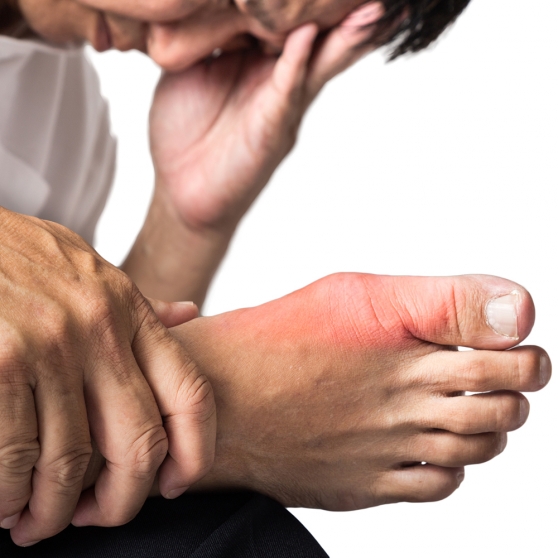Gout: Explained
Gout is most commonly associated with swelling, tenderness, stiffness, redness and pain in joints. This most often occurs in the feet, mainly in the big toe. But it can also affect the knees, ankles, hands and wrists. Although gout is a type of arthritis, it is “episodic” rather than chronic. A patient may have pain in the joint for days or weeks, but then may not exhibit any symptoms for a long period of time. Episodes are likely to be the most painful in the first 4 to 12 hours. Subsequent discomfort may then last for between a few days and a few weeks. After this, episodes may be more prolonged and impact more joints. Joint mobility can become limited as the disease advances.
Reviewed by:
Review Date:
October 15, 2015Citation:
Image courtesy of Miriam Doerr | Dreamstime.com Image courtesy of Keechuan | Dreamstime.com Image courtesy of Rob3000 | Dreamstime.com Image courtesy of Keechuan | Dreamstime.com Image courtesy of Puwadol Jaturawutthichai | Dreamstime.com Image courtesy of Atholpady | Dreamstime.com Image courtesy of Keechuan | Dreamstime.com Image courtesy of Suphaksorn Thongwongboot | Image courtesy of Igor Mojzes | Dreamstime.com Image courtesy of Everydayplus | Dreamstime.com Image courtesy of Tom Wang | Dreamstime.com American College of Rheumatology, "Gout" Mayo Clinic, "Gout" RxWiki, "Gout" CDC, "Arthritis: Gout"
Last Updated:
October 20, 2015
